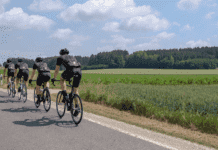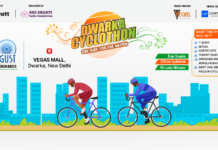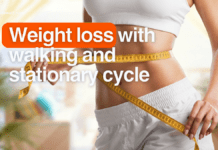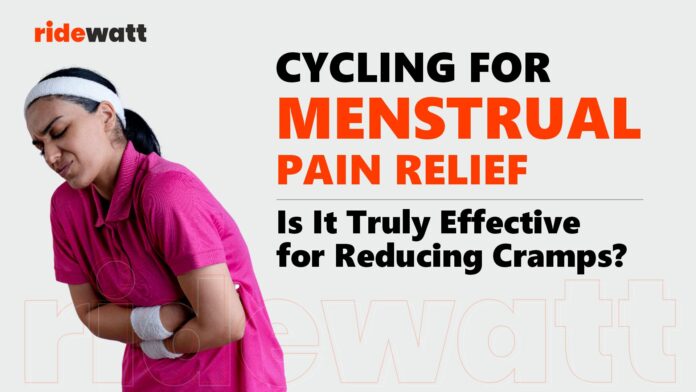Many women suffer from unbearable menstrual cramps. Periods come with a mix of symptoms, including physical discomfort, painful cramps, fatigue, mood swings, bloating, headaches, and more—collectively known as premenstrual syndrome (PMS). It’s common for women to be bothered by menstrual cramps and pain every month. You’re not alone if you’ve ever spent the day curled up in bed, skipping work, or battling cramps on the couch.
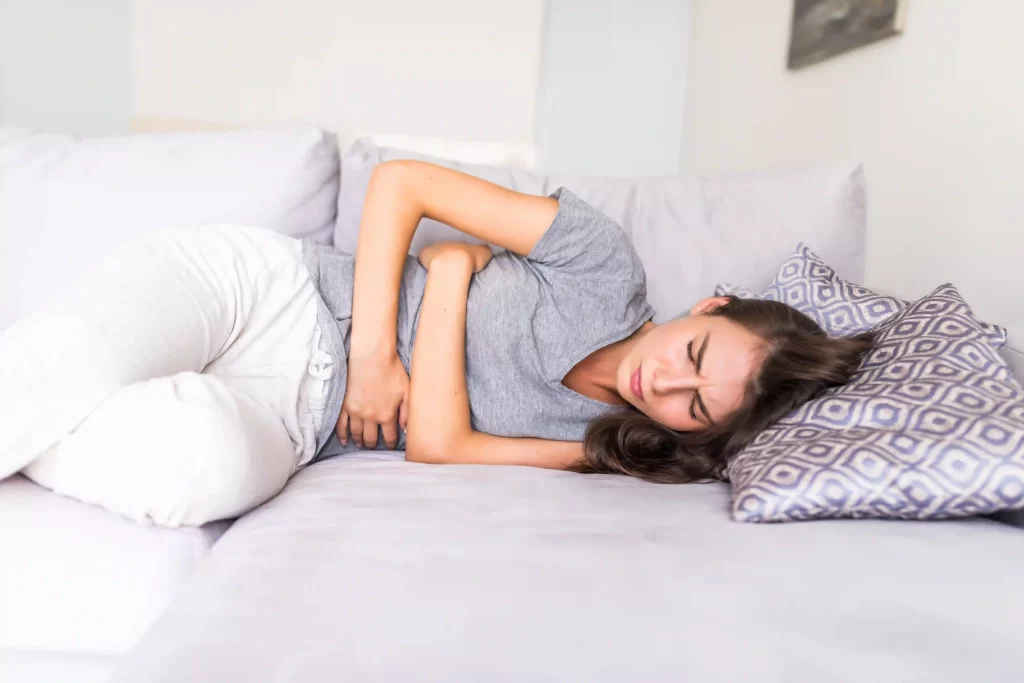
While some women still opt for traditional remedies like heating pads to relieve the discomfort, some of them are discovering the surprising benefits of physical activity. Among the various exercise options, cycling has gained attention as a potential remedy for menstrual pain. You may wonder, ‘Can cycling help reduce menstrual cramps? Is it the key to easing pain and improving overall well-being?’
We’re here to answer your questions and explain how cycling can help with period relief. But before we dive in, remember that everybody is unique. What works wonders for one person might not be as effective for another. That’s especially true when it comes to managing menstrual symptoms. With that in mind, let’s explore the science behind how cycling during your period can affect your menstrual cycle and why it could become your new go-to solution for period relief.
The Science Behind Exercise and Menstrual Cramps
Before we talk about cycling, let’s understand how exercise can help with period pain. Menstrual cramps occur when your uterus contracts to shed its lining. These contractions are triggered by prostaglandins, hormone-like substances that are involved in inflammation and pain. The more prostaglandins your body produces, the stronger and more painful the cramps can be.
Exercise helps by improving blood flow, which relaxes the muscles and may ease cramping. It also releases endorphins—your body’s natural pain relievers—that boost your mood and help reduce discomfort. While exercise doesn’t directly lower prostaglandin production, it can counteract its painful effects by improving circulation and releasing endorphins. Plus, staying active regularly may help keep hormone levels more balanced over time, which can lead to less severe menstrual symptoms over time.
Why Choose Cycling During Your Period?
Cycling is a low-impact cardiovascular activity that’s gentle on your joints while still providing an effective workout. Here are some reasons why cycling is a great choice for period pain relief:

- Improved Blood Circulation: The pedaling motion promotes blood flow throughout the body, including the pelvic region, which can help reduce cramps.
- Stress Reduction: Cycling outdoors or on a stationary bike is a great way to clear your mind and release stress. Stress can amplify menstrual symptoms, so finding ways to relax is crucial.
- Customizable Intensity: Whether you want to go for a leisurely ride or a high-intensity session, cycling allows you to adjust the intensity to suit your comfort level.
- Boosted Energy Levels: Periods can make you feel inactive, but cycling increases your heart rate and oxygen flow, giving you an energy boost to tackle the day.
- Core Engagement: Cycling engages your core muscles, which can indirectly support your pelvic region and alleviate some menstrual discomfort.
How Cycling May Reduce Menstrual Cramps
Cycling specifically targets some of the most common complaints during menstruation:
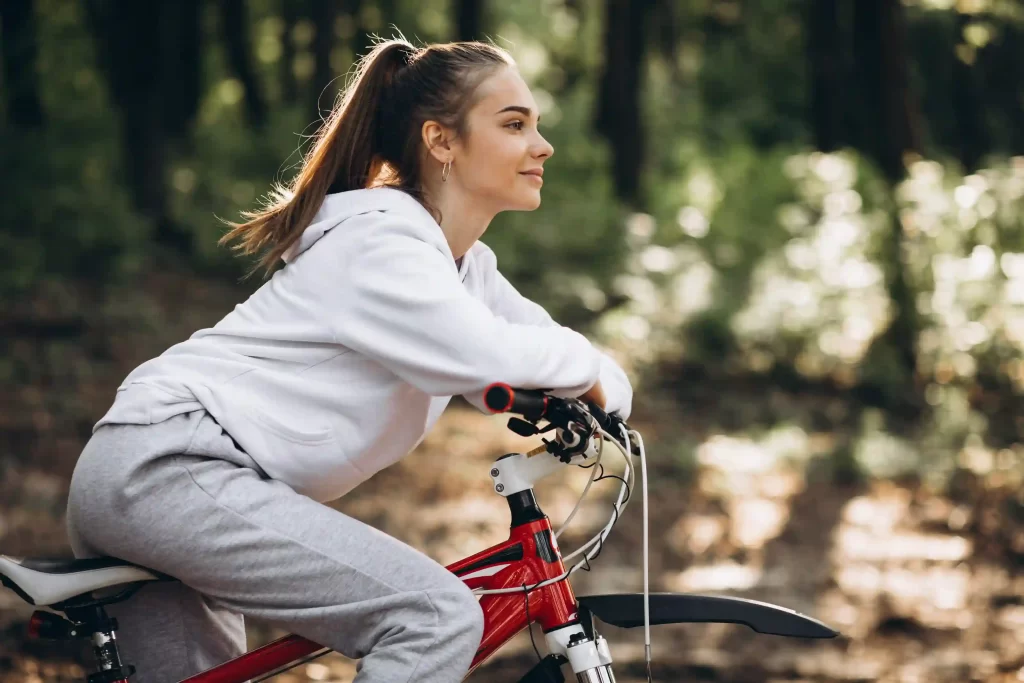
1. Reduction in Cramping
Pedaling increases blood flow to the pelvic area, which helps relax the uterine muscles and may ease cramps. While exercise doesn’t directly reduce prostaglandins, it helps counteract their pain effects by improving circulation and releasing endorphins—your body’s natural pain relievers.
2. Improved Mood
“You can’t buy happiness, but you can buy a bicycle, and that’s pretty close.” Cycling triggers the release of endorphins, which improve your mood and combat irritability or sadness often associated with PMS (premenstrual syndrome).
3. Lower Back Pain Relief
Many women experience lower back pain during their periods, and cycling’s posture can help stretch and strengthen your back muscles. The movement also helps loosen any stiffness, providing relief.
4. Reduced Bloating
Cycling encourages movement, which may help alleviate bloating and digestive discomfort associated with hormonal changes. This gentle movement supports better digestion and prevents the sluggishness often associated with hormonal changes.
Tips for Cycling Comfortably During Your Period
While cycling can be incredibly beneficial, it’s important to make a few adjustments to ensure comfort and safety.
- Choose Comfortable Gear: To reduce discomfort, wear padded cycling shorts and breathable fabrics. For added support, use a gel seat cover.
- Stay Hydrated: Drinking plenty of water is important, especially during your period, as dehydration can worsen cramps.
- Use Protection That Fits Your Lifestyle: Tampons, menstrual cups, or period-proof underwear are all good options for staying comfortable while cycling. Make sure to change your protection regularly to avoid leaks or infections.
- Adjust Your Intensity: Listen to your body and adjust the intensity of your ride. On heavy-flow days, consider a gentle ride instead of a high-intensity workout.
- Warm-Up and Cool-Down: A proper warm-up can help prevent muscle stiffness, while a cool-down session will relax your body post-ride.
- Don’t Ignore Pain: While mild cramps are normal, severe pain is not. If you experience intense discomfort, it’s best to consult a healthcare professional.
Cycling and Long-Term Menstrual Health
Regular cycling doesn’t just help during your period; it can also improve your menstrual health over time.
- Regulated Cycles: Consistent physical activity, such as cycling, helps balance hormones, potentially leading to more regular and predictable cycles.
- Reduced PMS Symptoms: Exercise has been shown to alleviate common PMS symptoms such as mood swings, fatigue, and bloating.
- Lower Risk of Dysmenorrhea: Studies suggest that women who exercise regularly experience fewer and less severe menstrual cramps than those who lead a sedentary lifestyle.
- Weight Management: Maintaining a healthy weight through cycling can reduce the risk of menstrual irregularities caused by being underweight or overweight.
A Gentle Reminder: Listen to Your Body
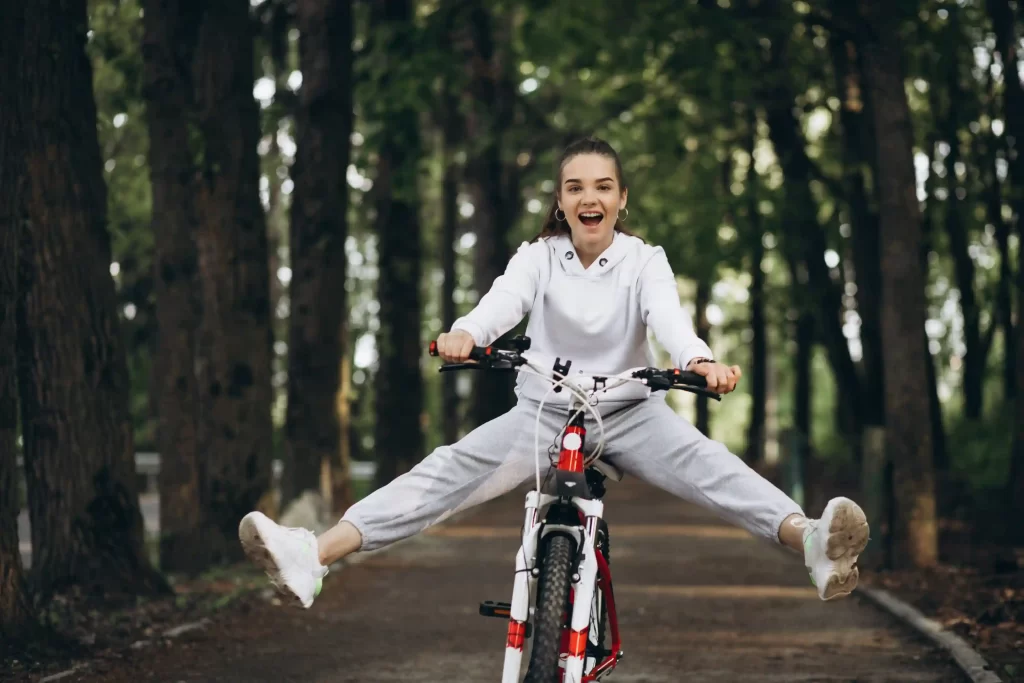
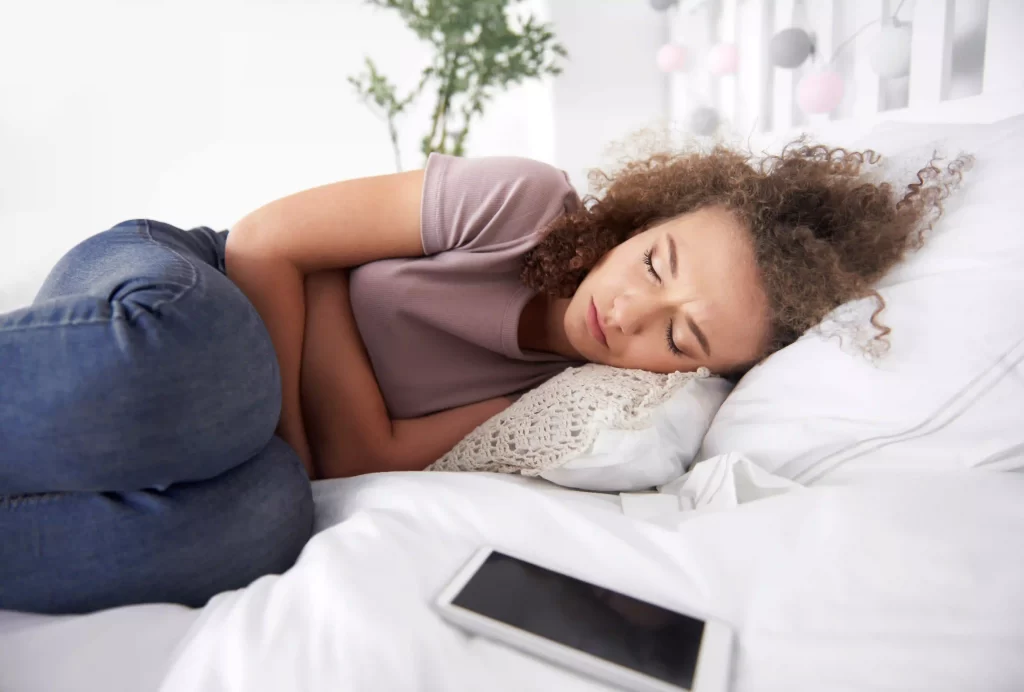
While cycling can be very beneficial for many women, it’s important to remember that everybody is different. Some women may feel energized and ready to ride, while others might prefer to rest. Always listen to your body and do what feels right for you. For example, if you feel energized, opt for a moderate ride, but if you’re feeling fatigued, a gentle spin or a short break might be more suitable.
If you’re new to cycling or have a medical condition, consult your doctor before starting any new exercise regimen. They can provide guidance tailored to your unique needs.
Cycling during your period isn’t just possible—it can be incredibly beneficial. From reducing cramps and boosting your mood to improving long-term menstrual health, cycling offers lots of advantages that make it worth a try. Whether you’re a seasoned cyclist or a beginner, hopping on your bicycle could be the key to a more comfortable period.
So, the next time you are on your period, don’t shy away from your bicycle as you pedal through the streets or trails; you’ll feel stronger and more in control of your body and your health. Cycling can transform discomfort into a sense of accomplishment and empowerment even during your period. Even in your period, this pleasure is one you can’t afford to miss!
Also check out https://ridewatt.com/the-12-health-benefits-of-cycling-transform-your-body/






